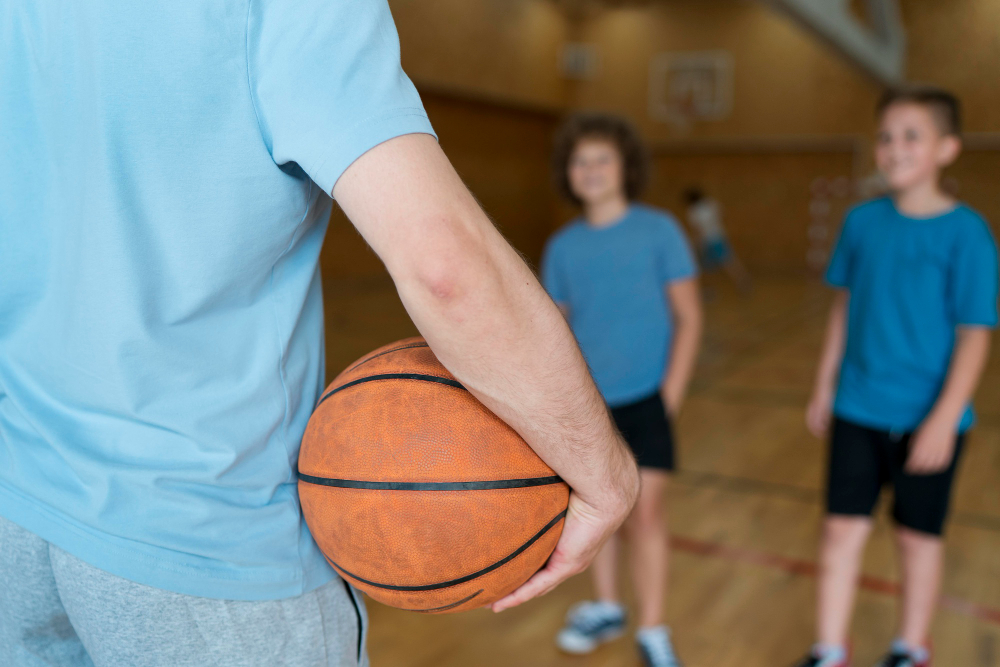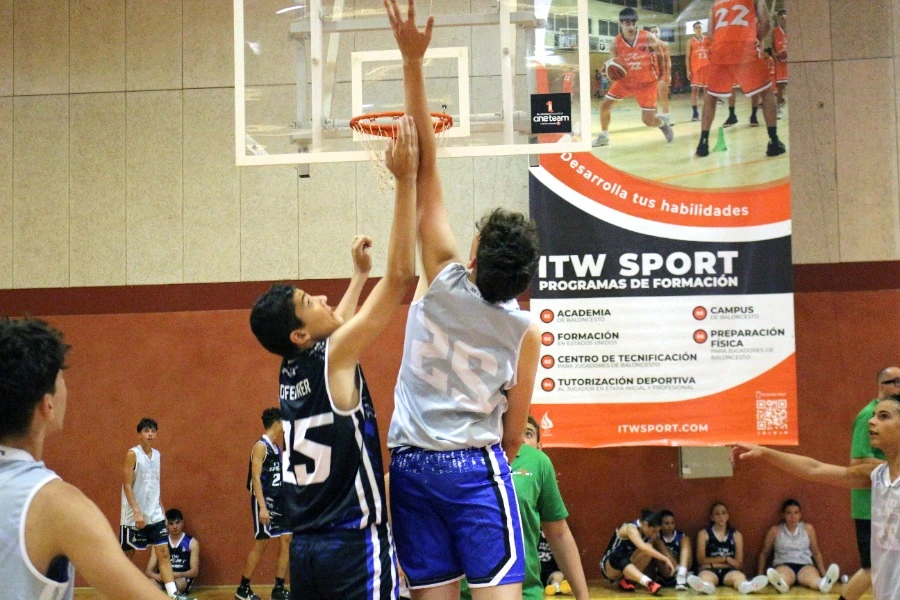The ankle contains various ligaments that are prone to sprains, and sometimes an ankle sprain doesn’t occur in isolation, but is associated with a fracture. That’s why it’s important to see a healthcare professional to rule out more serious injuries and, in case there are any, the physiotherapeutic treatment for an ankle sprain.
In this post, we will specifically talk about the external collateral ligament, as it is the most commonly injured in basketball players, and we will assume it occurs in isolation, without a fracture.
What is an ankle sprain?
A sprain is an injury to a ligament, and occurs as a result of a forced movement of the joint (in this case, the ankle), which stretches the ligament beyond its capacity.
There are different degrees of injury, and one way to classify its severity, from least to most severe, is as follows:
- Ankle sprain Grade I
It involves a stretch, meaning the fibers of the ligament are elongated. Small micro-tears would also be included here. The player may experience pain, functional impairment (unable to move the ankle properly), and generalized swelling (edema). In this type of sprain, there is no presence of bruising (i.e., the area will not turn purple).
- Ankle sprain Grade II
- There is a tear in some of the ligament fibers. The player will experience pain, instability, and severe functional impairment. Depending on the type of tear and its location, two additional signs might appear, in addition to the symptoms already mentioned, but they tend to appear independently, meaning either one occurs or the other:
- Bruising: due to the tear in the ligament, there is blood extravasation, resulting in bruising.
- “Paloma egg swelling”: with this type of swelling, the foot literally becomes like a ball.
- It occurs because, in addition to the tear in some of the ligament fibers, the joint capsule also tears, causing all the synovial fluid to leak out.
- This swelling is immediate and appears within a minute of the sprain occurring. If it doesn’t form, what usually happens is that after a few hours, normal inflammation sets in (this would be the typical case where you can continue playing with discomfort, and the next day it’s swollen).
- Ankle sprain Grade III
In this case, the ligament tear is total, or there is just a small thread connecting the two parts. The ankle will show a larger bruise than the one seen in grade II, very severe functional impairment, and a rapid inflammatory process. If only the ligament is torn, when the player moves the ankle, it will not hurt.
This is because if there is a grade I or II sprain and movements are made with the ankle, it is putting more tension on the ligament, and that is what causes the pain. However, if there is a grade III sprain and the ligament is completely torn in two pieces, movements will not create any tension, and therefore no pain will occur.
However, if in addition to the ligament, the capsule is also affected, it will indeed hurt. It is possible for both to occur simultaneously: the complete ligament tear and the rupture of the capsule (either partially or totally).

Should the footwear be removed?
You’ve probably heard that if someone sprains their ankle, they shouldn’t remove their footwear, but do you know why? It’s as simple as this: if we remove the shoe and later a "paloma egg" swelling occurs or the ankle swells too much, we won’t be able to put it back on.
So, the answer to whether a player should remove their footwear is: it depends. If they’ll have trouble getting to the medical center, it’s best to leave it on. However, if they’re accompanied and can be taken, it doesn’t matter if they remove it or not.
Etiology
The main cause of this injury is usually a sudden movement towards inversion (it’s the motion shown in the image, where the foot goes inward).
It’s common for this to happen in basketball players because it’s a sport involving jumps, direction changes, and sudden stops… All these actions place a lot of tension on the ankle, and if the foot is positioned incorrectly when it contacts the ground, a sprain can occur.
Another injurious mechanism that causes this is stepping on another player’s foot, which causes the ankle to suddenly and sharply twist.

Prevention
Unlike what happened in the previous post with interphalangeal capsulitis, sprains can be prevented to some extent.
Accidents can happen, such as stepping on a teammate’s foot and the ankle twisting, but we can make the ankle "strong" and ready to withstand those movements.
With the help of a professional, the ankle can be prepared to gradually adapt to the movements it will make throughout the game. This way, we will promote a better response capacity in case a harmful movement is made.
Ankle Sprain Treatment
To speed up the healing process of an ankle sprain, it’s very important to see a physiotherapist.
The first thing to keep in mind regarding physiotherapeutic treatment for an ankle sprain is that it requires a period of relative rest (according to the degree of injury), and an early return to the playing field can cause long-term issues. Therefore, even though we may be eager to get back on the court and play the sport we love, the best approach is to be patient and make sure the injury heals properly.
Why do we emphasize this? Because many players suffer a sprain and expect to return to full play within a week of the injury, but the reality is very different.
There are many factors that can influence recovery, and every player is different. The most important thing is to let ourselves be guided and advised by a good professional during the physiotherapeutic treatment for an ankle sprain, who will set the timelines for our return to sports practice.
When does an ankle sprain heal? Recovery times vary significantly depending on the degree of the sprain, and they are only indicative. They are not a rule to be followed 100%, for the reasons mentioned earlier: every person is unique.
- Grade I
Applying a functional bandage for 1 or 2 days is usually enough for healing. Full weight-bearing is typically achieved around the 3rd or 4th day, and return to sport usually happens from the 10th day onwards.
- Grade II
Depending on the symptoms and the degree of partial rupture (it's not the same if a quarter of the ligament is torn compared to three-quarters), the recovery times will vary. As a general rule, a bandage is typically applied for 5-10 days, and it may be recommended to reduce weight-bearing for 6-12 days. From here, early recovery should begin with the help of a physiotherapist.
In this degree of injury, the ligament typically heals between 6 and 15 days, but it is unable to withstand sports efforts until 30-45 days. This is very important and needs to be clear.
For example, if it's day 20 post-injury and it no longer hurts to walk, we shouldn't return to full sport activity because the ligament is still not prepared, and we could cause a new sprain, which would lead to a chronic injury.
It would be advisable to start doing sports under the supervision of a physiotherapist, who will set the limits we can reach so that the ligament adapts gradually and returns to optimal condition as quickly as possible.
- Grade III
The fact that the ligament is completely torn complicates recovery. It can be conservative (with the help of physiotherapy) or surgical. Generally speaking, if the athlete does not undergo surgery, healing usually does not occur until 30-45 days, and the ligament is not able to withstand sports loads until 60-90 days.
General Guidelines
The protocol typically followed in the physiotherapeutic treatment for ankle sprain and in the acute injury treatment is known as POLICE, and consists of [1]:
- P: Protection → the injured area must be protected to help the body with its own self-healing.
- OL: Optimal Loading → optimal loading must be achieved. There is always talk of a “rest” phase, but this should always be relative. Load should be added to the affected area, but in a regulated and controlled manner, always by a professional.
- I: Ice → to treat inflammation, ice should be placed on the affected area, but only in cases where it is excessive or there is a lot of pain.
- C: Compression → like ice, it helps reduce inflammation in cases where it is needed.
- E: Elevation → elevating the affected limb also helps reduce inflammation, especially if combined with the two previous techniques.
Finally, performing a functional bandage is usually the key treatment, as it limits the injurious movement without restricting the rest of the movements. This type of bandage should always be applied by a professional, as incorrect placement can hinder healing and cause pain to the player.
Once we enter the subacute phase, it will be important to regain ankle mobility and muscle tone. Furthermore, one of the major pillars of rehabilitation is proprioception training, which helps stabilize the joint and prevent the sprain from recurring by improving the joint's reflexive capacity.
Ultimately, for a sprain to heal properly and reduce the risk of recurrence, the support of a physiotherapist is essential. This way, the player will always be well advised and receive the most suitable individualized treatment for their case, and thus achieve what we all want: to return to playing basketball as safely and quickly as possible.
Bibliography
[1] https://lafisioterapia.net/protocolo-police-fisioterapia
Tania González
Physiotherapist ITW Sport Sports Program






